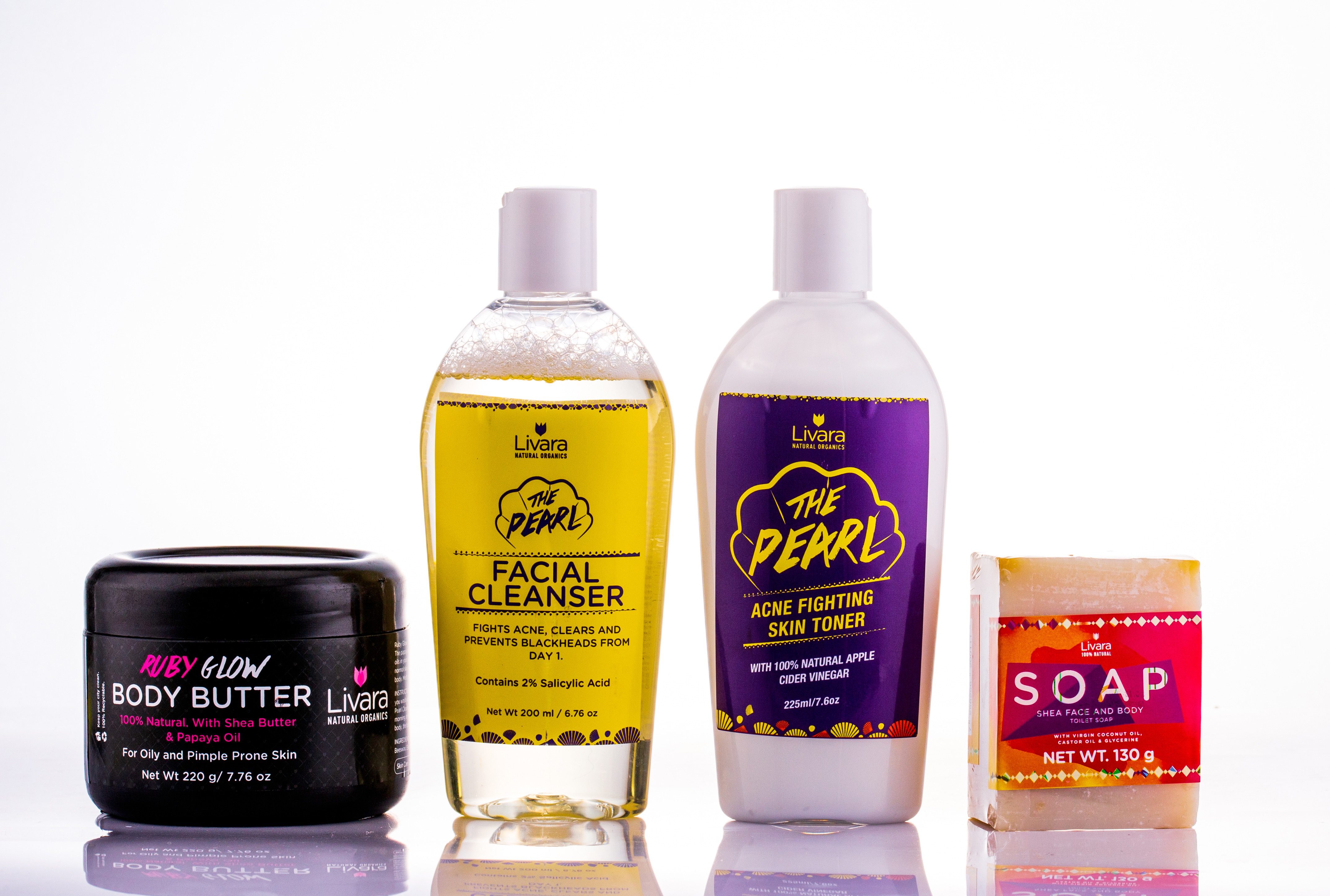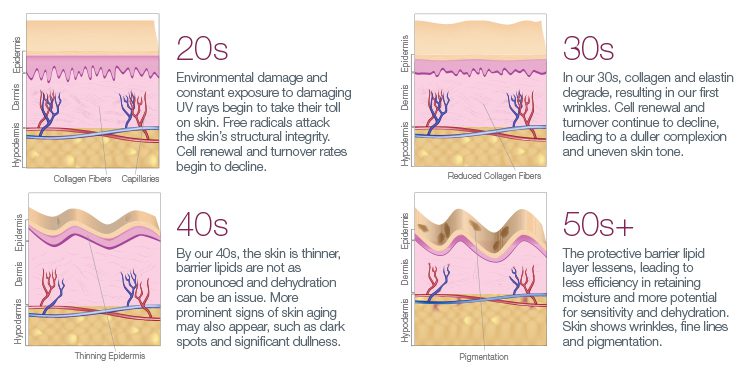- Support 24/7
- +1 (480) 468-4543
- livara@mylivara.com
10 Factors that Affect Skin Aging

Operations Manager
October 26, 2022
Ideal Shopping List for Someone Starting their Natural Hair Journey
November 11, 2022The skin is the biggest organ of our bodies and stretches right from the tip of our heads to the sole of our feet. And because of its size, it’s usually the most revealing aspect of our health – both internal and external. When your body is happy, your skin shines and smiles; when your body is unhappy and unhealthy, your skin will undeniably show that off as well. There are several things that contribute towards the health of your skin however, this article is dedicated to just the major 10 factors that affect skin aging and most of which are within your control.
The broad 10 factors that affect skin aging were broken down into 3 broad categories: biological, lifestyle and environmental factors. In the study The Skin Interactome: A Holistic “Genome- Microbiome-Exposome” Approach to Understand and Modulate Skin Health and Aging, the holistic beauty wheel was produced to categorize these factors into 3 broader modules for better understanding.
Maintaining youthful skin is not only a factor of following a good skincare routine. Youthful skin is a result of several external and internal players working together harmoniously to achieve the expected/anticipated result – and all this against the effects of time.
There have been higher demands on skin care cosmetic products for strong performance and these have pushed companies into intense research drives to understand the mechanisms of skin aging. These mechanisms are then what are used to design strategies to improve overall skin health. In spite of this, below are some of the things you must know and probably do in order to retain youthful looking skin.
1. Biological Factors
Physical and biological phenotypes of the skin aging processes manifest differently between diverse ethnic populations. For example, studies have shown that Chinese women exhibit notably lower pore size and density across all the age groups compared to other ethnicities.
Research shows that wrinkles appear at early stages in Caucasian skins, compared to other ethnic groups. In fact, Chinese women exhibit a prevalence of pigmented spot and a delayed appearance of wrinkles by 10 years, when compared with French women – according to another study.
Compared to Caucasian skin, Asian and dark skin tone have much thicker and structurally more compact dermis. This could be one of the reasons why Asians and dark skin tone individuals have lower incidence of facial wrinkles.
However, the most striking dissimilarities when comparing Caucasians skin to darker skin color are both the quantities of melanin and proportions. Higher skin melanin content provides a stronger advantage against UV rays, photo aging, and cancer. At the same time, darker skin is more prone to be sensitive to hypopigmentation, making uneven skin a typical sign of photoaging on dark skin tone.
A study performed on 3,875 postmenopausal women confirmed that oral intake of estrogen has significantly improved skin hydration on the studied panel. Thus, estrogen deprivation leads to skin dryness, therefore restoring skin moisture with topical moisturizers should be part of the daily skin care regime in women before even entering the menopause phase.
We cannot forget the gravitational pull on skin that makes it sag and droop with time. The longer we live, the longer this has happened and so will be best observed among the older people.
We cannot eternally fight biology and genetics however we can make them work for us when we understand the internal workings of our systems better.
2. Environmental Factors
The sun’s impact on skin health is quite diverse. Sunlight is composed of different wavelengths, penetrating the skin at various levels.
There’s the UVR – Ultraviolet radiation – which is the primary factor of extrinsic skin aging. It accounts for approximately 80% of facial aging.
Then there’s the Blue light – a range of the visible light spectrum. Interestingly, a recent study showed a direct impact of blue light on circadian rhythm. Blue light disrupts the circadian rhythm and creates damage in skin cells and eventually accelerates aging.
Away from the sun and light, we have several types of pollutants (air, water, soil, noise, radioactive, and thermal), air pollution is the major one, which affects all the living organisms. The common pollutants are particulate matter (PM), volatile organic compounds (VOC), ozone, nitrogen, and sulfur dioxide, both their concentrations and composition of these pollutants vary in countries across the world (according to a WHO report). Skin is the direct target organ and is mostly affected by all these pollutants, in addition to the lungs. Pollutants not only damage the skin but also accelerate premature aging primarily via oxidative stress, skin barrier dyfunctions, inflammation, and apoptosis.
Topical skincare product may help to prevent and reduce the damaging effects of air pollutant on exposed skin, thus supporting the maintenance of an optimal skin health condition. It is thus important to always protect one’s skin with good topical skin creams and/or butters.
Additionally, seasonal variations have a big impact on skin appearance and texture. Low temperatures and humidity during winter deprives the skin of ample hydration and thus increases risks of dermatitis. Changes in seasons induce changes in skin hydration, sebum content, scaliness, brightness, and skin elasticity. Finding the right products for the right season is therefore of major importance. What may work during winter may not necessarily work during summer, autumn and spring.
Climate change seems to be evolving at a record pace because of the impact of human and non-human related activities on the environment. Despite the extensive research on how climate change could alter health systems, so far very few studies have been carried out to explore the consequences on skin health.
3. Lifestyle Factors
Several studies have been carried out and traditionally in African settings we have been informed that sleep is important for growth and renewal of multiple physiological systems, including and especially the skin. It has been mentioned repeatedly that the minimum hours an adult needs for sleep are 6. There’s truth to it and truth that your skin definitely needs and deserves.
During exercise, oxygen and nutrient rich blood are delivered across the body through the highly regulated integration of our blood network. These are extremely core to regeneration of cells and repair of different body parts. Intense exercise leads to sweat, which helps the skin to keep clear, as when we are sweating, the pores flush out toxins that need to be washed properly afterwards, as they can lead to irritation and blemishes. Sweat is your best friend and should therefore be desired.
Some of the most studied micronutrients with beneficial effects on skin health, both from oral and topical applications, are essential vitamins and antioxidants. Vitamin C is broadly used as a supplement and has multiple benefits on our overall health, associated with maintenance of our immune system as well as protecting DNA, proteins, and lipids from oxidative damage. Vitamin C also has similar benefits in the skin, both as an antioxidant driving photo-protection and reducing skin pigmentation, but also in terms of affecting synthesis and improving the stability of collagen protein in the skin. Other essential vitamins with specific skin benefits are Vitamin E, Vitamin B3, Vitamin D and others.
Vitamin A active compounds (retinol, retinyl esters, retinaldehyde, retinoic acid) are widely used for skin health purposes due to their multifunctional beneficial roles in relation to acne treatment, pigmentations and regulation of matrix proteins such as collagens. Through our diet we get a supply of dietary retinyl esters (RE) and carotenoids, found in fruits and vegetables. So, choose your food wisely.
Polyunsaturated fatty acid (PUFA) are essential fatty acids such as linoleic acid, arachidonic acid (ω-6), and in particular W-linoleic acid (ω-3) that are of critical importance for skin health, due to their potential applications in disease prevention, but also treatment of the most common inflammatory skin diseases, such as atopic dry skin acne and psoriasis. The benefits of PUFA seem to involve multiple mechanism of actions both via receptors regulating signaling processes that influence pat- terns of gene expression via eg PPARγ as well as more direct changes in cell membrane fatty acid composition. Whereas Omega-3 is often sourced from fish oil, Omega-6 can be found in the plant kingdom in sources such as shea butter, safflower oil, flaxseed oil, and soybeans.
Livara
Lastly, a good skin care routine will go a long way in strengthening the advantages and benefits of good self care, nutrition, biology and genetics. We cannot stress more the importance of washing one’s skin twice a day to remove all the damaging toxins, cleansing the skin to further clear away the toxins, toning the skin to revitalize it and finally moisturizing to protect and feed your skin for a more youthful look.

A good skin care routine is adhered to daily and preferably twice a day. The best and most consistent results are usually observed after at least 3 months of consistent use.




